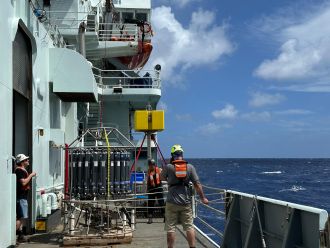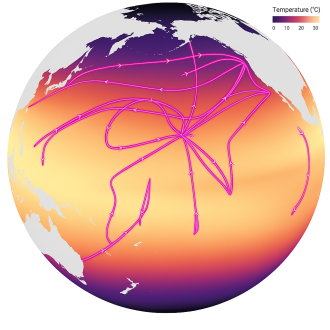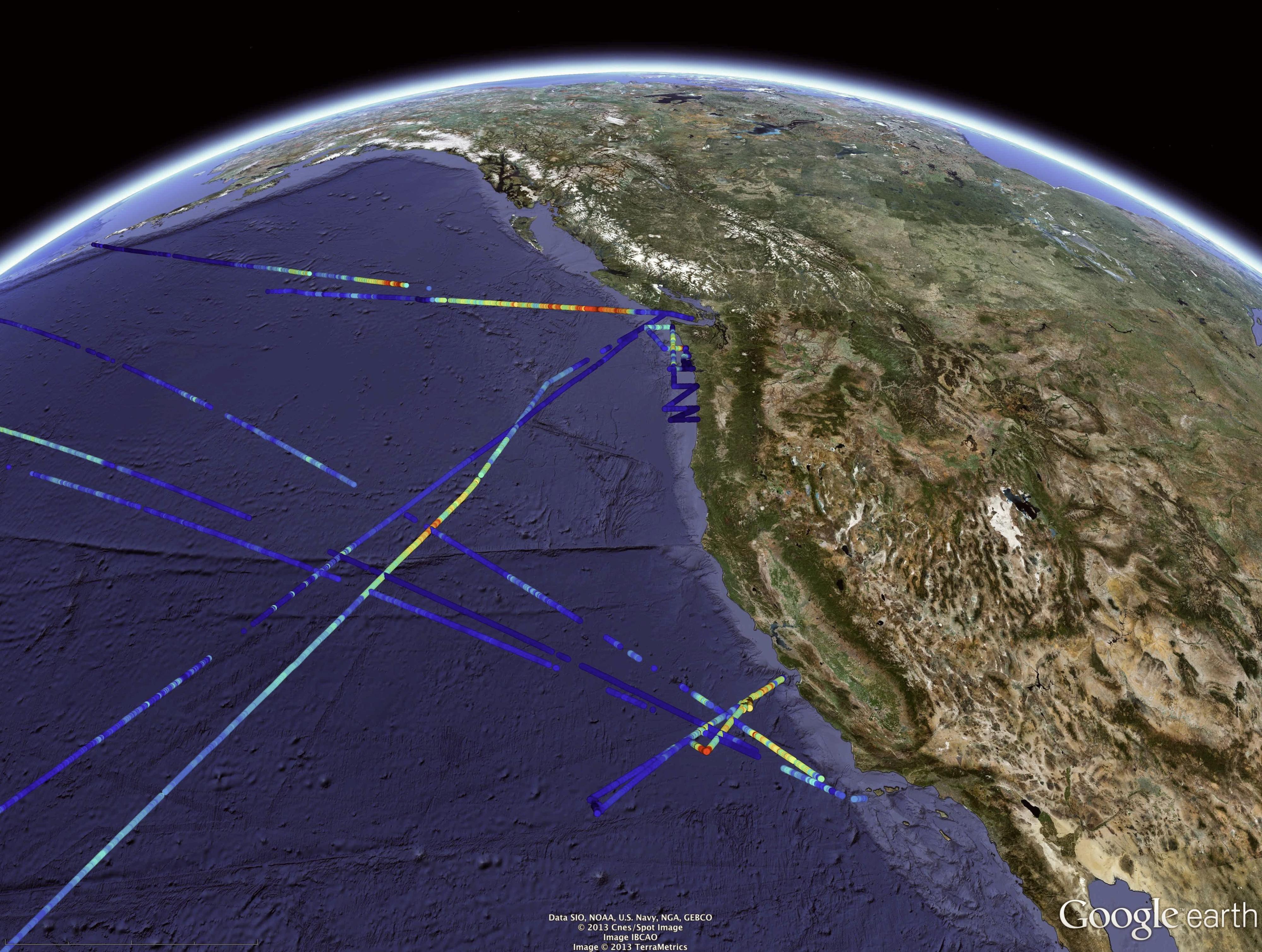Media release
From:
Important oxygen-producing marine microbe threatened by warming oceans
Prochlorococcus — Earth’s smallest and most abundant photosynthetic organism and an important oxygen producer — may see population reductions of up to 51% in tropical oceans by 2100 under moderate and high warming scenarios, according to a modelling study published in Nature Microbiology. The findings, based on decade-long data collected from ships traversing the Pacific Ocean, suggest that these bacteria may be more vulnerable to climate change than previously thought.
Prochlorococcus is a cyanobacterium that is crucial to oceanic ecosystems. Various strains of Prochlorococcus inhabit up to 75% of Earth’s sunlit surface oceans and their photosynthesis produces approximately one-fifth of the planet’s oxygen. Many tropical and subtropical sea surface temperatures are predicted to regularly exceed 30 °C by the year 2100, threatening marine ecosystems. Prochlorococcus can thrive in the warmest tropical and subtropical ocean regions, and it has been assumed that their range would expand as oceans continue to warm. However, these estimations were only based on laboratory data.
To estimate how wild populations of Prochlorococcus may respond to warming ocean temperatures, François Ribalet and colleagues analysed a decade’s worth of data between 2010–2023. collected continuously using instruments mounted to ships traversing the tropical and subtropical Pacific Ocean. They found that the rate at which Prochlorococcus divides and grows is tied to ocean temperature. However, while previous predictions suggested that exponential growth would continue at higher temperatures, in the ocean, division rates were found to sharply decline when sea surface temperatures exceeded 28 °C. Modelling suggested that Prochlorococcus productivity may see a 17–51% reduction compared with the present day under future moderate and high warming scenarios equivalent to Representative Concentration Pathways 4.5 and 8.5 (climate change scenarios to project future greenhouse gas concentration).
The results highlight the potential vulnerability of crucial ocean bacteria under climate change. The authors note that their field sampling could obscure the existence of rare, heat-tolerant Prochlorococcus strains, and the geographical restrictions of their ship-based data could not sample some warmer tropical regions.
Multimedia










 International
International



